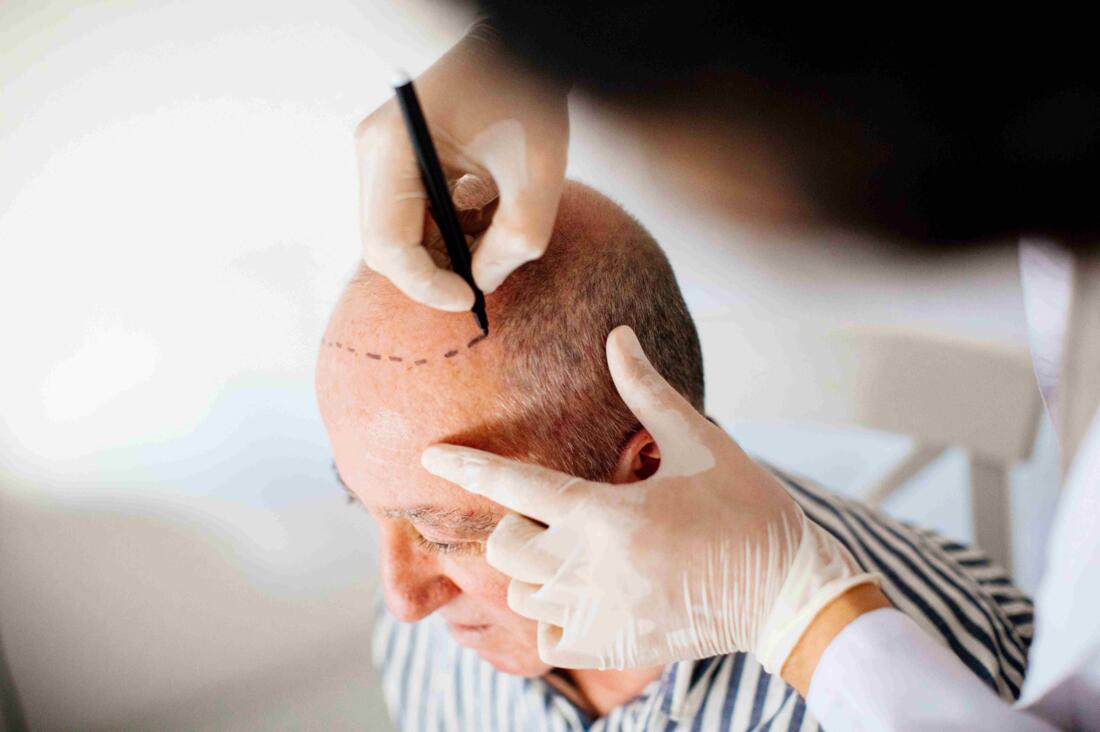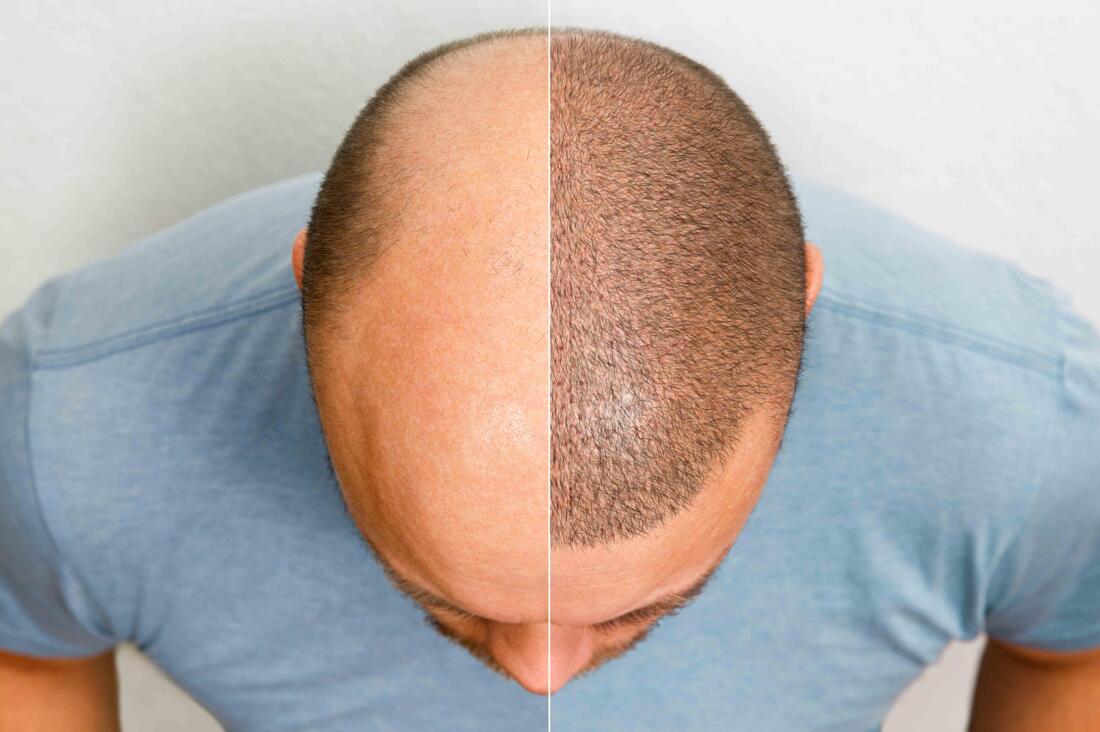Experiencing hair loss can be upsetting as it not only impacts the scalp but also affects self-esteem and confidence. Thankfully, advancements in hair restoration have brought new possibilities and optimism to individuals dealing with hair loss.
Overcoming Hair Loss
The advancements in hair transplantation methods offer enhanced precision and effectiveness, leading to more natural-looking results and minimal discomfort. Follicular Unit Extraction (FUE) and Follicular Unit Transplantation (FUT) are widely used techniques, each with unique benefits. These procedures focus on accurately extracting and implanting hair follicles to achieve a natural appearance in new hair growth.

FUE Method
The FUE technique has become increasingly popular because it is less invasive and does not leave a linear scar. During this procedure, hair follicles are taken from the scalp without using a scalpel or stitches, resulting in a faster recovery and reduced discomfort after surgery. The precision of this approach ensures that the transplanted hair aligns with the natural growth pattern, blending seamlessly with existing hair. Moreover, advancements in robotic technology have improved the accuracy and effectiveness of the FUE method.

FUT Method
Alternatively, FUT, or strip surgery, involves extracting a small strip of tissue from the back of the scalp where hair is more resilient to balding. The follicles are then isolated and relocated to the areas experiencing balding.
Although this approach may result in a linear scar, it is usually concealed by the patient's existing hair and may be a more economical choice for individuals in need of numerous grafts.
Both FUE and FUT boast high success rates and can be customized to align with the individual requirements and anticipations of each patient.
Thanks to these sophisticated methods, individuals dealing with hair loss now have a better chance of attaining a full and natural-looking head of hair, rejuvenating not just their tresses but also their self-assurance.
Understanding Hair Loss Causes for Effective Treatment
Hair loss can stem from a variety of causes, including genetic factors, hormonal changes, medical conditions, and environmental influences. Understanding the root cause of hair loss is crucial for determining the most effective treatment options. Androgenetic alopecia, commonly known as male or female pattern baldness, is the most prevalent form and is hereditary in nature. Hormonal imbalances, often triggered by conditions like thyroid disease or polycystic ovary syndrome, can also lead to significant hair thinning. Additionally, stress and nutritional deficiencies can exacerbate hair loss, making it imperative to address both physical and emotional health in treatment plans.
The Role of Hair Growth Products in Restoration
In addition to surgical options, many individuals explore non-surgical hair restoration products. Minoxidil and finasteride are two popular FDA-approved treatments that can stimulate hair growth and prevent further loss. Minoxidil, applied topically, promotes blood flow to hair follicles, encouraging growth in both men and women. Finasteride, taken orally, works by inhibiting the hormone responsible for hair loss in men. While these treatments can be effective, individual results vary, and it's essential to consult with a healthcare provider to determine the best course of action based on personal needs and health history.
Post-Transplant Care for Optimal Results
Once a hair transplant procedure is completed, proper post-operative care is vital for ensuring the best possible outcomes. Patients are typically advised to avoid strenuous activities and exposure to direct sunlight for a few weeks following the surgery. Additionally, it is crucial to follow the physician's guidelines on washing the scalp and applying any prescribed medications. Keeping the scalp clean and moisturized helps in promoting healing and encourages the growth of newly transplanted hair follicles. Regular follow-up appointments with the surgeon can further enhance the chances of success and address any concerns the patient may have.
Psychological Benefits of Hair Restoration
The psychological impact of hair restoration can be profound, often leading to improved self-esteem and overall quality of life. For many individuals, hair loss is not just a physical change; it can affect their identity and how they perceive themselves in social situations. Regaining a full head of hair can restore confidence and allow individuals to engage more freely in personal and professional environments. Many people report feeling more attractive and youthful after undergoing hair restoration treatments, which can lead to positive shifts in mindset and interactions with others. The emotional benefits often extend well beyond the physical appearance.
Exploring Advanced Techniques in Hair Restoration
Emerging technologies continue to shape the future of hair restoration, with advancements in techniques enhancing both efficacy and patient experience. For instance, Platelet-Rich Plasma (PRP) therapy has gained traction as a non-surgical option that utilizes the patient’s own blood to stimulate hair follicles. This treatment has shown promise in promoting hair growth and improving the thickness of existing hair. Additionally, advancements in 3D imaging and mapping of the scalp allow surgeons to personalize procedures more accurately, ensuring optimal follicle placement and angling for a more natural look. As research continues, the potential for innovative approaches to hair restoration remains vast.
Long-Term Maintenance of Hair Restoration Results
After achieving desired results from hair restoration, long-term maintenance is essential to sustain hair health and fullness. Patients should incorporate a balanced diet rich in vitamins and minerals that promote hair growth, including biotin, zinc, and omega-3 fatty acids. Regularly using gentle, sulfate-free shampoos and conditioners can also help maintain hair quality without stripping essential oils. Furthermore, avoiding harsh treatments or styles that stress the hair can prevent future loss. It is beneficial to remain in contact with a healthcare provider for ongoing assessments and recommendations, ensuring hair remains healthy and vibrant well into the future.
AI-Assisted Content Disclaimer
This article was created with AI assistance and reviewed by a human for accuracy and clarity.